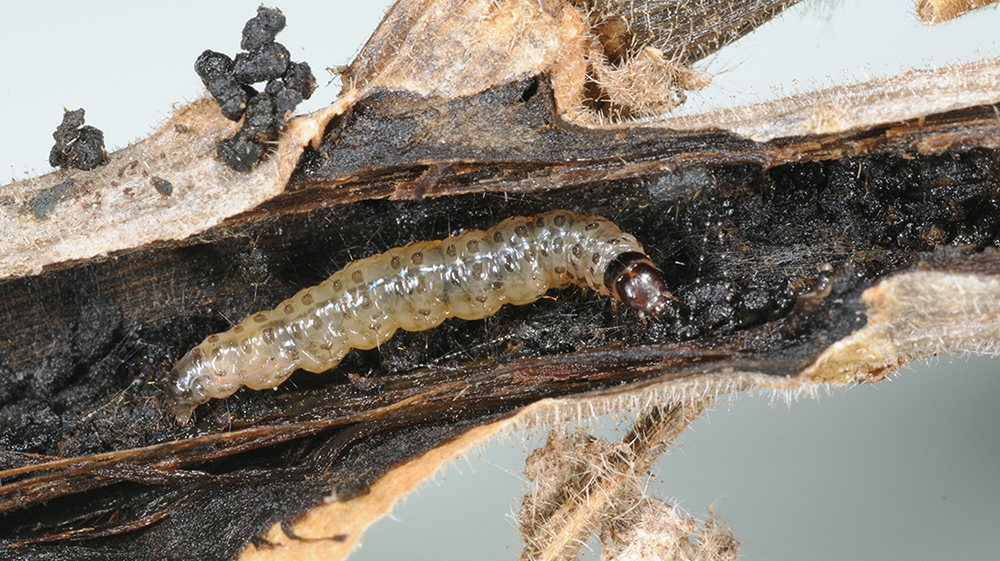European Pepper Moth | Vol. 3, No. 28

Duponchelia fovealis
Order: Lepidoptera
Family: Crambidae
Greenhouse and nursery producers need to become familiar with this new pest. European pepper was first detected in California in 2004 and was first recorded in Mississippi in 2010. These caterpillars attack a wide range of ornamental plants, as well as certain vegetables, and can be especially damaging to nursery and greenhouse crops such as chrysanthemums, poinsettias and geraniums. Infestations are difficult to detect and problems often go unrecognized until heavy damage has occurred, resulting in plants that are unmarketable.
The feeding behavior of the caterpillars is quite different from that of most other caterpillars. They tend to remain near the base of the plant, leaving silk webbing along the surface of the growing media, and will even tunnel into the potting media and feed on roots. Although all parts of the plant are subject to attack, damage includes defoliation of lower leaves, especially leaves touching the growing media; boring in plant stems, which can result in sudden collapse of individual plants or branches; and girdling of the main stem at the base of the plant. This last type of feeding injury is similar to that caused by a beaver chewing the bark off of a pine or sweet gum tree. These caterpillars will even eat dead leaves lying on the growing media and roots growing through the drain holes in the bottom of the pot.
The small, grey-colored moths are small (less than ½ inch long) and relatively inconspicuous. When flushed they tend to fly only a short distance before alighting on the undersides of leaves where they are difficult to see. When observed at rest moths usually hold their abdomen in an upward curved position above their jet-shaped wings. When wings can be examined closely, look for a light colored line with a distinct finger-like downward projection across the distal portion of the front wings. Commercial pheromone traps are available and are useful for determining whether or not these moths are present in a nursery or greenhouse.
Control: European pepper moths are difficult to control because the caterpillars feed deep within the plant, and even within the growing media, where they are difficult to reach with foliar sprays. Acephate (Orthene TT&O) can be effective when properly applied, taking special care to assure the spray penetrates through the outer canopy and reaches the base of the plant and surface of the growing media. Cyantraniliprole (Mainspring GNL) is another promising treatment because of its systemic activity. Mainspring can be applied as a foliar spray or as a media drench.
Blake Layton, Extension Entomology Specialist, Mississippi State University Extension Service.
The information given here is for educational purposes only. Always read and follow current label directions. Specific commercial products are mentioned as examples only and reference to specific products or trade names is made with the understanding that no discrimination is intended to other products that may also be suitable and appropriately labeled.
Sign up to receive Bug's Eye View.

